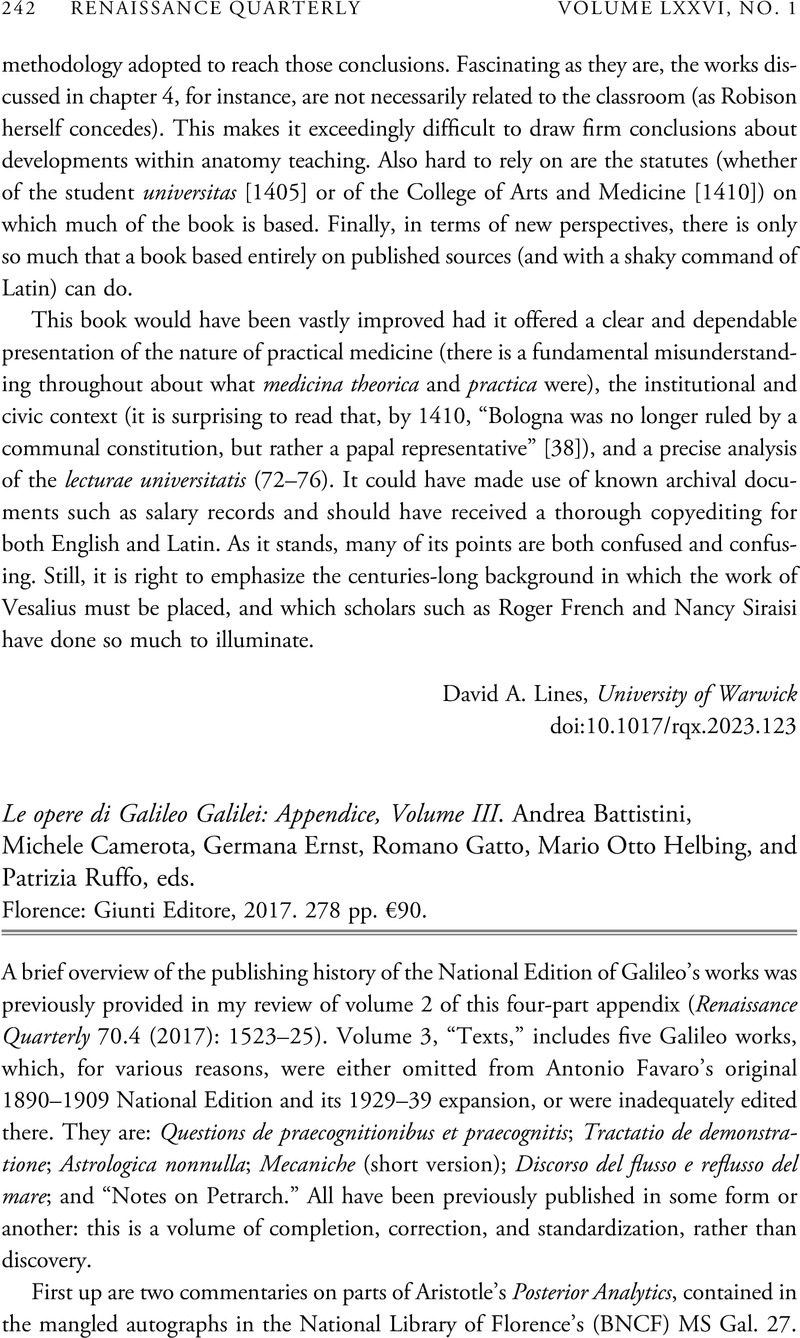No CrossRef data available.
Article contents
Le opere di Galileo Galilei: Appendice, Volume III. Andrea Battistini, Michele Camerota, Germana Ernst, Romano Gatto, Mario Otto Helbing, and Patrizia Ruffo, eds. Florence: Giunti Editore, 2017. 278 pp. €90.
Review products
Le opere di Galileo Galilei: Appendice, Volume III. Andrea Battistini, Michele Camerota, Germana Ernst, Romano Gatto, Mario Otto Helbing, and Patrizia Ruffo, eds. Florence: Giunti Editore, 2017. 278 pp. €90.
Published online by Cambridge University Press: 17 April 2023
Abstract
An abstract is not available for this content so a preview has been provided. Please use the Get access link above for information on how to access this content.

- Type
- Review
- Information
- Copyright
- Copyright © The Author(s), 2023. Published by the Renaissance Society of America



